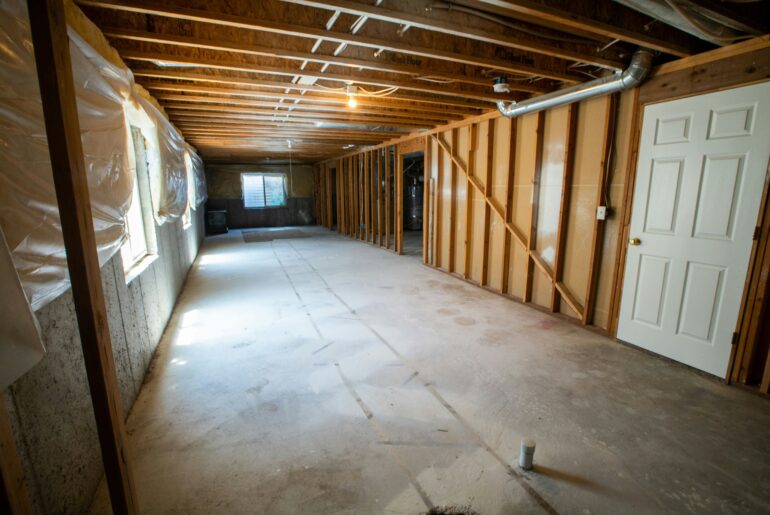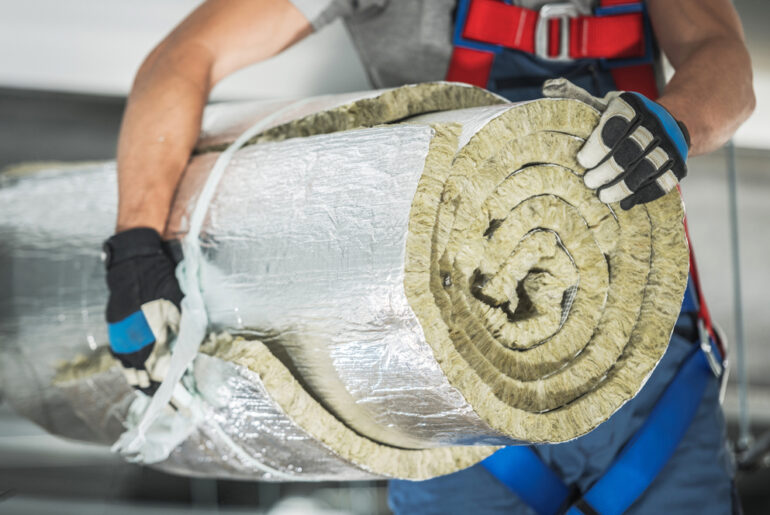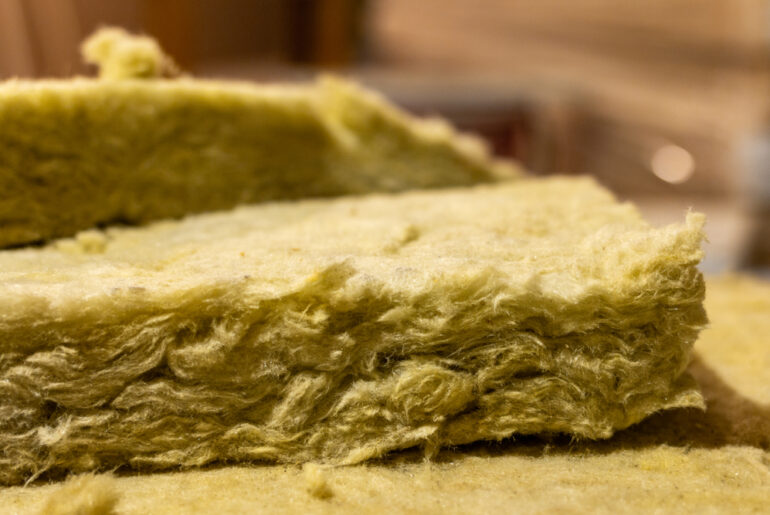As odd as it may seem, newspaper can be an effective insulator. Many homes use newspaper as insulation, but not in its original form. The most common form of newspaper insulation is ground into tiny fibers and blown into attic floors using a machine called a hopper.
Known as cellulose insulation, newspaper (and other paper products) are recycled, disinfected, chemically treated and blown into an attic to provide effective R value. Cellulose forms a thermal barrier between the living space and the attic, which prevents warm air from rising into the attic from below.
Cellulose actually outperforms most common insulation materials in extremely low temperatures. Insulation made from newspaper will settle over time however, so a process called capping is required every 5-10 years to maintain the R value.
Today we will discuss how newspaper insulation forms a thermal barrier, how it is used in modern construction, and when you should avoid using newspaper as insulation.
Is Using Newspaper As Insulation a Good Idea?
Recycled newspaper and other wood based by-products are very recyclable, especially when formed into insulation bales or batts. About a hundred years ago newspaper was used as insulation and known as “Hoover blankets”, as many homeless people used newspaper to keep warm.
Newspaper is really just wood pulp fibers mixed with adhesives and ink to form a solid, but degradable paper sheet. The recyclability of newspaper is due to the material’s water soluble nature. Newspaper can be recycled almost indefinitely, although demand for newspaper is a fraction of what it was just a few decades ago.
Where Can I Use Newspaper As Insulation?
You can use newspaper as insulation as long as it is not in its original form. Newspaper used in sheet form can still technically provide a small R value, but it is not recommended if other options are available.
Newspaper stuffed into a cavity (like between joists and studs) will absorb and retain any moisture inside the void. As the moisture accumulates, insects are attracted, which attract vermin like mice and rats. The moisture also promotes the growth of mold and mildew, eventually leading to wood rot.
In cellulose form, newspaper insulation is insulation with few downsides, as it contains both a moldicide and fire retardant from the factory. Cellulose is also available in batt form for use in walls, crawlspaces, and attic floors as well.
Why Would I Use Newspaper As Insulation?
Cellulose insulation is relatively inexpensive because nearly all of the materials are recycled over and over. However, recycling newspaper into insulation is a process, so the manufacturing process accounts for more of the cost of cellulose insulation than the actual raw material.
When Should I Avoid Using Newspaper As Insulation?
Newspaper insulation should not be used in its original form in an effort to reduce the cost of the project. Untreated newspaper insulation is extremely flammable and will absorb moisture like a sponge.
Both situations should be avoided, as taking this shortcut could take longer to correct than the amount or time the shortcut saved.
What Are the Pros and Cons Of Using Newspaper As Insulation?
Pros Of Using Newspaper Insulation:
- Relatively inexpensive
- Provides excellent R value
- Easy to install
- DIY friendly
- Installs very quickly
- Can be augmented with fiberglass, spray foam, and rigid foam panels
Cons Of Using Newspaper Insulation:
- Will settle
- Absorbs moisture
- PPE, like a respirator, gloves, and eye protection are required
- Must be capped every 5-10 years, which is to add a few inches of cellulose on top of the existing cellulose (or fiberglass)
How Do I Use Newspaper As Insulation?
To install newspaper insulation made into loose fill cellulose, you will need a hopper, personal protective equipment, and the bales of cellulose. A helper also makes the project much easier because you cannot be in two places at once.
1. Measure How Much Newspaper Insulation You Will Need
Your calculation will involve three numbers. You will multiply the area of the space (let’s say an attic) by the number of inches you need to achieve the desired R value. If your attic is 25’ x 40’ and you need 12” of cellulose (R-42), the math looks like this:
25’ x 40’ x 1’ (12” thick) = 1000 cubic feet
A typical bale of cellulose insulation will insulate about 4 square feet to an R value of 25, which is about 6” of cellulose. So, your project will require about ⅓ more bales to achieve R-42 than it would to achieve R-25:
1000 square feet of area / 4 cubic feet per bale = 25 bales = R-25
We need R-42, not R-25, so we do a little more math:
42 (desired R value) / 25 (existing R value) = 1.6
25 bales x 1.6 = 40 bales = 1000 square feet insulated to R-42
2. Load the Hopper
Cellulose insulation is dropped in chunks into a machine called a hopper, which grinds up the bale and makes the fibers airborne. Most hoppers have controls that allow the installer to stop and start the hopper remotely to ensure even coverage.
3. Blow the Insulation
Cellulose is very easy to install, especially if you have a helper. A helper can open the bales, break up the sections, and drop them into the hopper. This allows the installer to insulate an entire attic in just a few minutes without stopping.
Most installations involve depth gauges as well. As we’ve described, cellulose made from newspaper provides about R-25 or so when installed 6” deep. DIYers benefit by installing these cardboard depth gauges (also recycled) around the attic, as it helps keep the insulation depth consistent.
Alternatives to Using Newspaper As Insulation
The most common alternatives to newspaper insulation (cellulose) are expanding spray foam, rigid foam boards, fiberglass batts, and mineral wool (also known as Rock Wool). These materials offer additional features cellulose does not, like a vapor barrier and crack sealing.
Fiberglass Loose Fill and Batts
Loose fill fiberglass is installed just like cellulose loose fill using a hopper. Fiberglass batts are handy because they can be purchased pre-cut to both length and width. Batts also provide a very accurate R value because they are pre made to a specific thickness and R value.
Expanding Spray Foam
Expanding spray foam is the most technologically advanced insulation material, as it combines the benefits of other forms of insulation into one product. Spray foam installs quickly like cellulose, provides a vapor barrier like batts, and seals tiny gaps like caulk all at the same time.
Rigid Foam Boards
Rigid foam boards are made from both expanded polystyrene (EPS) and extruded polystyrene (XPS) foam. Rigid foam boards can be installed side-by side, stacked, or a combination of both.
Rigid foam boards can be attached with fasteners, adhesive, or both to form a very durable thermal barrier. The joints are taped with hydrophobic foam board tape like this one to prevent moisture infiltration behind the boards. Rigid foam boards can be used in attics, walls, crawlspaces, and underground to insulate a foundation.
Mineral Wool
Mineral wool is made from leftover slag produced when volcanic stone is melted. Mineral wool is made by compressing these fibers with other materials and chemicals into a batt. Mineral wool batts are usually installed by compression and do not use fasteners, nor adhesives.
Mineral wool is an effective insulator, but it requires very accurate measuring and cutting to avoid wasting the insulation. Mineral wool is among the most effective materials, but it is relatively expensive to both purchase and install. Mineral wool is mostly used around high heat sources like furnaces and pilot lights, as it has an extremely high melting temperature.





